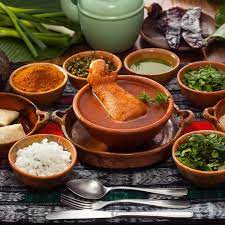
Exploring delightful Guatemalan cuisine during the 10 days Yoga Retreat
Embarking on a transformative yoga retreat in the heart of Guatemala offers more than just spiritual growth and relaxation. It's also an opportunity to savor the rich and diverse flavors of Guatemalan cuisine. In this blog post, we'll take you on a culinary journey through the vibrant and tantalizing dishes that make this retreat an unforgettable experience.
Nestled in Central America, Guatemala boasts a cuisine as diverse and vibrant as its colorful landscapes and rich cultural heritage. With a history that blends Indigenous Mayan traditions, Spanish colonial influence, and more recent global inspirations, Guatemalan cuisine is a fascinating journey through flavors, textures, and stories. Join us as we embark on a culinary adventure to explore the delectable world of Guatemalan food.
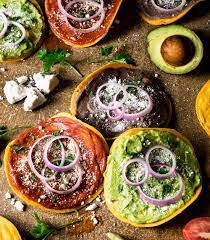
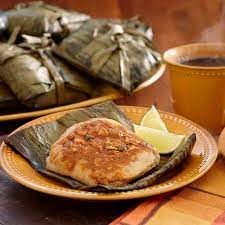
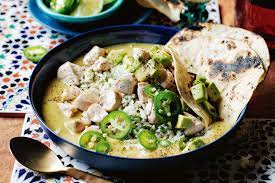
Corn: the heart and soul
At the core of Guatemalan cuisine lies corn, a sacred crop for the Mayan people and a symbol of sustenance. Corn is transformed into the ubiquitous tortillas, which accompany nearly every meal. These thin, round, and freshly made corn flatbreads are the perfect vessel for sopping up the delicious flavors of Guatemalan dishes.
The harmony of beans and rice
Black beans are another essential ingredient in Guatemalan cooking. They are often paired with rice to create a comforting and nutritious staple. Gallo en chicha is a classic example—a dish featuring chicken cooked with aromatic spices and served with a savory-sweet chicha sauce, made from a blend of fruits and spices.
Meats and seafoods
Guatemalan cuisine embraces various types of meat, including chicken, beef, and pork. Seafood takes center stage along the coasts, offering delectable options such as ceviche, where fresh fish is marinated in citrus juices and seasoned with herbs and chilies for a burst of refreshing flavors.
Pepian and recados-flavorful sauces
Pepián and recados are the heart and soul of Guatemalan stews and meat dishes. These flavorful sauces are crafted from a medley of spices, tomatoes, and sometimes a hint of chocolate, adding depth and richness to many traditional recipes.
Tamales
Tamales are a cherished Guatemalan specialty. These bundles of joy are made from corn masa filled with an array of ingredients, including chicken, vegetables, or sweet fillings. Wrapped in banana leaves or corn husks, they are lovingly steamed to perfection.
Spice it up with chiles
For those who savor a touch of heat, Guatemalan cuisine doesn't disappoint. Various types of chiles are used to infuse dishes with a spicy kick, bringing a delightful warmth to the palate.
Sweet temptations
No meal in Guatemala is complete without a sweet ending. From dulce de leche, a luscious caramelized milk confection, to sweet breads, and desserts featuring ingredients like plantains and sweet potatoes, Guatemalan sweets are a delightful indulgence.
Sip and savor
When it comes to beverages, Guatemala is renowned for its coffee. The country produces high-quality coffee beans, making it a coffee lover's paradise. Don't miss the opportunity to sip on a cup of freshly brewed Guatemalan coffee. Additionally, horchata, a refreshing rice-based drink, is a popular choice for quenching your thirst.
Street food delights
Exploring Guatemala's bustling streets reveals a world of street food delights. Tacos, tostadas, and elotes (corn on the cob) are just a few of the mouthwatering options offered by street vendors.
Mayan Heritage
One cannot truly appreciate Guatemalan cuisine without acknowledging the profound Mayan influence. Dishes like Kak'ik, a turkey stew with Mayan roots, connect the present to the ancient traditions that have shaped this culinary landscape.
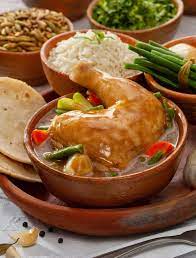

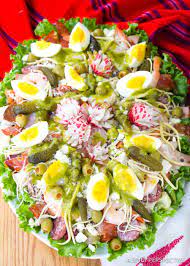
Tostadas Guatemaltecas or Guatemalan tostadas are snacks made with deep-fried or oven-toasted corn tortillas as the base. They’re often served as a quick snack or appetizer, usually before lunch or when celebrating holiday festivities with family. They’re also commonly sold as street food in Guatemala. Tostadas can be topped with various ingredients but traditional Guatemalan tostadas are usually topped with guacamole, tomato salsa, or refried black beans.
Tamales are a traditional Mesoamerican dish that dates back to 8,000 to 5,000 B.C. They’re made with either corn masa or rice flour and steamed in fresh plantain leaves (or corn husks) to give them a rich flavor and aroma. They can be filled with various meats, cheeses, fruits, corn, tomatoes, bell peppers, roasted chilies, or any other ingredient. Guatemala has four main versions of the dish – tamale colorado (red tamales), tamale negro, chuchito, and tamalito.
If each country has its own soup dish that stands to represent its culture and cuisine, Guatemala has Caldo de res. Often called cocido or “cooked” in Antigua, this beef broth is one of the most consumed dishes in Guatemala. As a result, it’s a regular offering on the menus of Guatemalan restaurants and other dining establishments. Its roots can be traced back to a similar dish of Andalucian origin – a peasant soup called puchero that was prepared during colonial times in Latin America and the Philippines. It has taken many names in countries where it’s popular, and Guatemala has its own version of it in the form of Caldo de res.
Jocon is another traditional Guatemalan dish that hails from Huehuetenango, a city and municipality in the country’s western highlands. It’s popular among the Mayan population since the dish itself is heavily influenced by its people. Also known as jocon de pollo, the recipe uses chicken stewed in a green sauce made with cilantro and tomatillos. It’s then thickened with ground pumpkin and sesame seeds and served with corn tortillas, rice, and avocado slices.
Pepian de Indio, is recognized as one of the national dishes of Guatemala. This chicken stew is also said to be the ultimate Guatemalan comfort food. With its tender cuts of chicken cooked in a lightly-spiced tomato sauce and mixed with toasted pumpkin seeds and chili sauce, it’s hard to argue with that. Its origins date to pre-colonial times when the Mayans grew crops such as corn, beans, chilies, squash, and tomatoes, which are the basis of their cuisine. But the key to the delicious nutty flavor of pepian de indio is the pan-roasted pumpkin and sesame seeds that are ground into a fine powder and mixed in the sauce to give it that smooth velvety texture.
Kak’ik is one of the most popular Mayan dishes in Guatemala and is also recognized as one of the country’s dishes of intangible cultural heritage. It’s a type of turkey soup cooked in a lightly spiced red broth. This popular Guatemalan turkey soup is traditionally prepared by using native turkeys, tomatoes, cilantro, chilies, and achiote which gives the soup its vibrant color.
If there’s one dish served during a specific holiday in Guatemala, that would be Fiambre. Widely regarded as a Guatemalan national dish, fiambre is a unique salad prepared and consumed yearly for All Saints Day (Dia de Todos Santos) and the Day of the Dead (Dia de Los Muertos). Fiambre was believed to have started when families tending their dearly departed’s graves would bring food – usually what their loved ones enjoyed when they were still alive – and share a meal. They believe this reignites their connection with them. With Guatemalans known for being warm and friendly, they eventually share what they have with other neighboring families visiting their gravesite, creating fiambre in the process. Fiambre translates to “cold meat” or “cold cuts” in Spanish. It’s an assembly of various ingredients on one big plate and served cold. A fiambre recipe involves an assortment of meats, cheeses, pickled relishes, and vegetables, which totals an average of around forty ingredients, making it worthy of being the mother of all salads.
Mole de platano is a traditional Guatemalan dessert that’s perfect for chocolate lovers. It’s made of mole, a chocolate sauce mixed with fried plantains, cinnamon, chili, and bell peppers sprinkled with sesame seeds. The dish has been deemed so important in the country’s culinary heritage that it was given Intangible Cultural Heritage status in 2007 by the Guatemalan Ministry of Culture and Sport.
Guatemala is considered the birthplace of chocolate. The ancient Mayans worshipped the cacao tree and its beans to the point that they referred to it as the “food of the gods”. Ixcacao was the goddess of chocolate and was often called upon to provide bountiful harvests. During the Mayan era, chocolate was consumed mostly as a bitter and spicy drink. To prepare, they would grind the cacao beans by hand and mix them with water, vanilla, honey, corn, and chili. Typically reserved for the elite, chocolate was regarded as a valuable commodity that was used as an aphrodisiac and a form of currency.
Atol de elote is a sweet and creamy corn drink that’s commonly sold in markets. Served warm and often seasoned with cinnamon or vanilla, atol de elote tastes similar to arroz con leche and could be described as a cross between horchata and corn chowder. Creating the silky-rich texture is traditionally done by grinding corn using a grinding stone or metate. Milk, sugar, and spices are mixed in a giant pot where the sweet concoction is heated before being served in cups.
Guatemalan cuisine is a fusion of flavors and cultures, a reflection of a nation's rich history and diverse geography. Whether you're savoring the simplicity of freshly made tortillas, indulging in the complex flavors of pepián, or exploring the spice-infused world of chiles, every bite in Guatemala tells a story. So, when you visit this beautiful country, don't just travel; embark on a culinary journey that will leave your taste buds tingling with delight and your heart brimming with the warmth of Guatemalan hospitality.
Join our Yoga and Hiking Retreat in Guatemala by clicking here.
